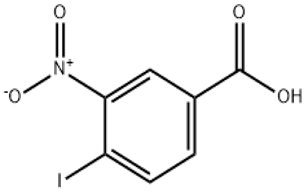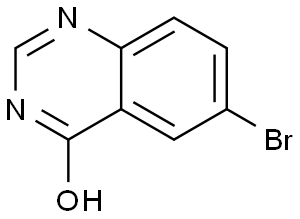4-Iodo-3-nitrobenzoic acid(CAS# 35674-27-2)
| Risk Codes | R20/21/22 – Harmful by inhalation, in contact with skin and if swallowed. R36/37/38 – Irritating to eyes, respiratory system and skin. |
| Safety Description | S22 – Do not breathe dust. S26 – In case of contact with eyes, rinse immediately with plenty of water and seek medical advice. S36/37/39 – Wear suitable protective clothing, gloves and eye/face protection. |
Introduction
4-Iodo-3-nitrobenzoic acid is an organic compound with the chemical formula C7H4INO4. The following is a description of its nature, use, preparation and safety information:
Nature:
-Appearance: 4-Iodo-3-nitrobenzoic acid is a yellow crystalline powder.
-Melting point: about 230°C.
-Solubility: Soluble in ethanol, ether and chloroform, insoluble in water.
Use:
- 4-Iodo-3-nitrobenzoic acid is mainly used as an intermediate in organic synthesis.
-It is an important raw material for the synthesis of drugs and pesticides.
-It can also be used for the synthesis of light emitting layers in organic electroluminescent devices (OLED).
Preparation Method:
There are many methods for the preparation of 4-Iodo-3-nitrobenzoic acid, one of which is commonly used to obtain by nitration of iodobenzoic acid. The specific preparation steps are as follows:
1. dissolve iodobenzoic acid in concentrated nitric acid.
2. Slowly add concentrated sulfuric acid at low temperature and stir the reaction.
3. After the reaction is carried out for a period of time, the product in the reaction solution is separated by filtration or crystallization.
4. 4-Iodo-3-nitrobenzoic acid was finally purified by washing with an appropriate solvent and crystallization.
Safety Information:
- 4-Iodo-3-nitrobenzoic acid is an organic compound. Personal protective measures should be taken when using it, such as wearing gloves and eye protection glasses.
-The compound is corrosive to a certain extent, avoid skin contact and inhalation.
-During the operation, pay attention to avoid contact with strong oxidants and reducing agents to avoid dangerous reactions.
-During storage, it should be stored in a cool, dry, well-ventilated place, separated from flammable substances and combustibles.
-If contact occurs, immediately rinse the affected area with plenty of water and seek medical help.








